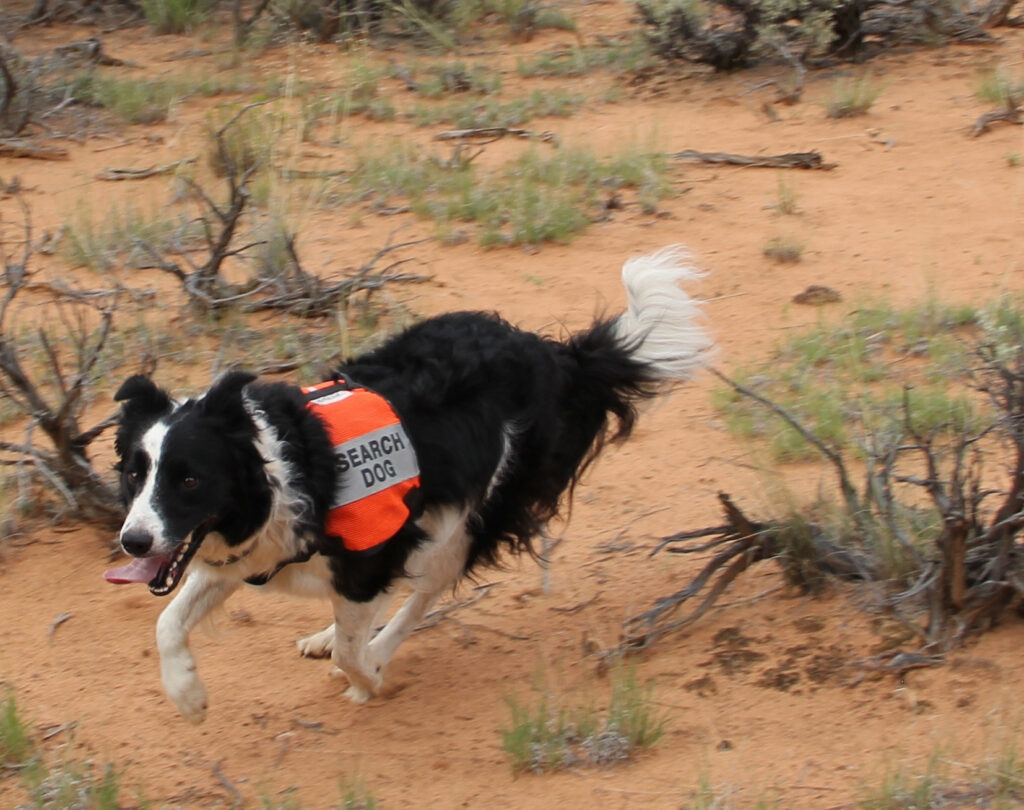
A job both you and your dog will love–that is actually a great service, and potentially can save lives! How cool is that?
Search And Rescue With Your Dog
What is K-9 Search and Rescue? It involves training you and your dog to search for lost people in many different scenarios.
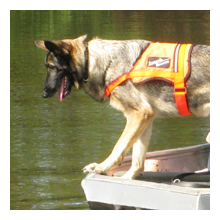
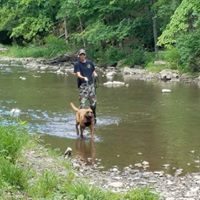
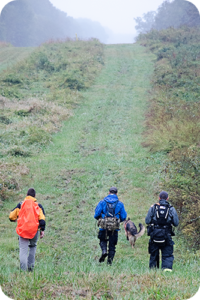
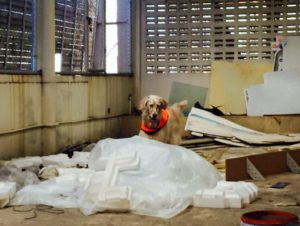
- A hiker lost deep in the woods, or somewhere in the wilderness.
- A child or Alzheimer’s patient who wandered away.
- Victims of natural disasters–hurricanes, floods, tornadoes, earthquakes, avalanches, etc.
- Drowning victims
- Abduction victims.
Can I Do SAR?
Do you enjoy the outdoors? Are you willing to be out in all sorts of weather? Will the possibility of insects, thorns or possibly snakes not freak you out?
SAR involves training and searching in a variety of places and weather conditions. Training your dog to do SAR means training all kinds of scenarios.
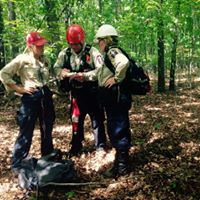
We can tell the human members of the team what they may be faced with, but we have to show the canine members of the team, so they are used to many different situations and can work in them all.
Are you interested in helping others? SAR provides a great service to people lost, or caught up in a disaster, or seeking closure for a presumably deceased relative or friend. It involves many hours of training, but is a great way to give to your community. I remember when I first thought about doing SAR, I thought it would be a great way to have a really worthwhile goal for my dog training. I was putting in time training my dog for the fun of it–why not make it useful? Having a goal that was so worthwhile made training that much more fun!
Can My Dog Do SAR?
People often ask me “What is the best breed for SAR?”. I always answer that it isn’t the breed, so much as the

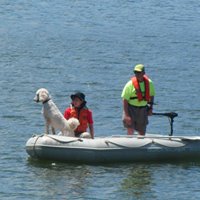
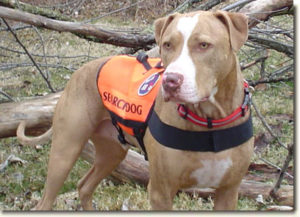
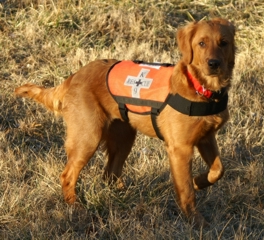

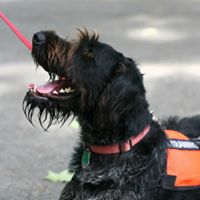
individual dog and his attitude. You want a dog who enjoys “doing”. In other words, a dog who enjoys being active–whether it’s going for walks, playing ball, whatever. He’s the dog who wants to keep going, and play, play, play. The dog needs to be reasonably confident–if strange situations shut him down, he may not like SAR.
Consider that it takes 1 to 1 1/2 years to train a SAR dog, and possibly even longer for your first SAR dog. Preferably, your dog should be under 2 or 3 years or thereabout when you start him. But you gain a lot of experience training your first dog. So even if you start with a dog that is older than ideal, you will be a much better trainer when you later get a younger dog or a puppy.
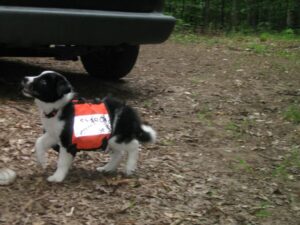
What Are The Different SAR “Disciplines”?
Dogs can be trained to do different types of SAR. Handlers may have a preference of what type of SAR they want to do, and dogs also may prefer or show more talent in one type than another. Many dogs are cross-trained to do two or more types of SAR work, others specialize in only one.
Humans are always emitting scent–while alive and even after death. The dogs are trained to recognize and follow up on human scent.
The most common SAR K-9 disciplines are:
- Air Scent
- Human Remains Detection
- Trailing
Air Scent
Wilderness Air Scent dogs work off leash in areas such as parks, woods, and open land, actively seeking human scent. They are looking for whoever is out there, not a specific person. When the dog detects human scent, he will work to follow it up to the source (the human). When he finds a person, he runs back to his handler and “indicates”, or performs a trained behavior (such as a jump, bark, tug, etc.) to communicate to the handler that he has “found”. The dog then leads the handler back to the found person.
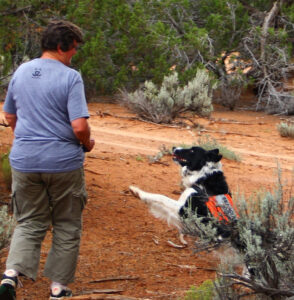

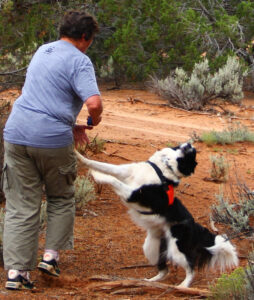
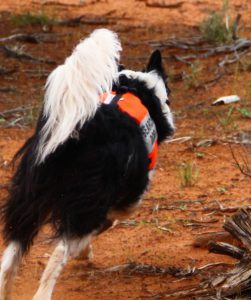
In the above training exercise, the dog has found the subject, run back to his handler and used her as a springboard to turn and lead her back to the victim.
Although usually used in remote areas, these dogs can be used to look for people in neighborhoods, for instance in shrubbery around houses, and occasionally in houses. “Lost” children are sometimes hiding in places close to home, not visible to searchers but easily detected by the dogs.
Human Remains Detection
These dogs are looking for human remains–from a newly deceased person to old graves to victims of natural disasters. They are trained to find any human tissue at any stage of decomposition and communicate their find to their handler with a “trained final response”. This is usually a passive indication, such as a sit or down, but can also be a bark, jump, or whatever the handler chooses to train.
The “source” they are looking for may be as large as a whole body, or as small as a splatter of blood. It may be only hours old, or many years old. It may be lying on the ground, buried or under water. The only constant is that it is human tissue no longer living.
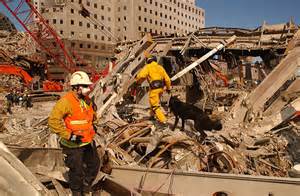
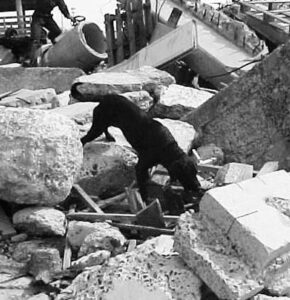
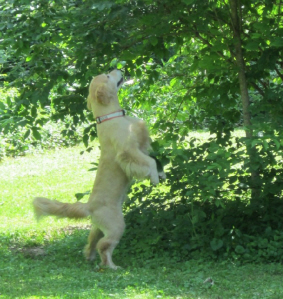
Trailing Dogs
Trailing dogs aren’t searching so much as following the path a person took. These are the dogs many think of when they think of Search and Rescue dogs. Although frequently Bloodhounds, many different breeds and mixes are used. They are scent specific–having been given something with the subjects scent on it to determine what trail to follow.
They work on lead, and follow the path the subject traveled working through all other human scent to get to the source. Although they sometimes may not be able to follow the trail all the way to the person they are looking for, they often can give searchers a direction of travel to concentrate resources (such as air scent dogs) toward.
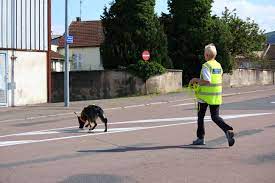

Trailing dogs need a starting point, the victim’s last known point or the site of a clue that was found. Air scent dogs are deployed in areas that the victim is thought to most likely be.
What Does Training Involve?
You first have to decide what discipline you and your dog are leaning toward. Do you want to work areas with your dog off lead? Do you want to follow the trail on lead? Do you want to search for living people, or for human remains?
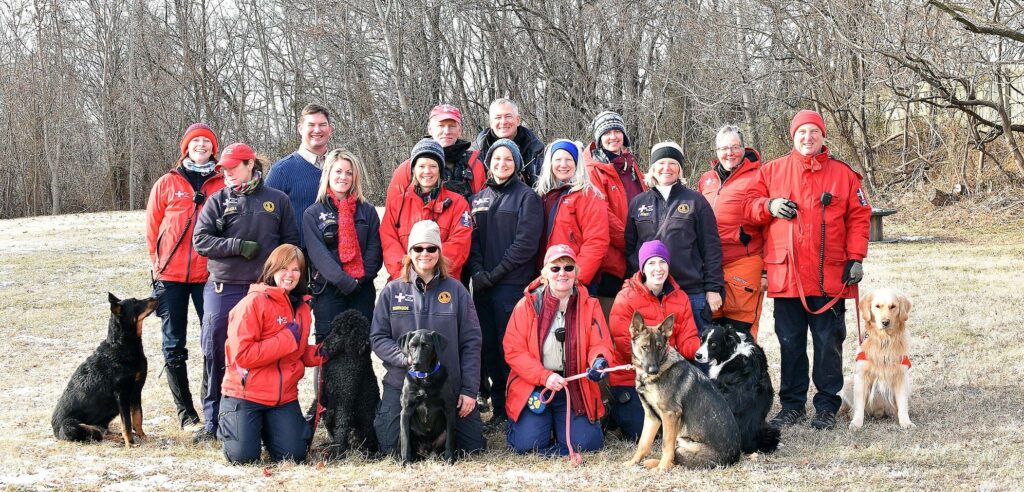 Often there are teams in your area that you can hook up with for training, and their specialty may determine what direction you take. If there is only an air scent team near you, it makes sense to learn from them. If there is a good trailing team in the area, that might be who you go to for training. K9 SAR is hard to do without the support of experienced handlers!
Often there are teams in your area that you can hook up with for training, and their specialty may determine what direction you take. If there is only an air scent team near you, it makes sense to learn from them. If there is a good trailing team in the area, that might be who you go to for training. K9 SAR is hard to do without the support of experienced handlers!
Training involves teaching the dog the “game”, and insuring that the dog thinks it’s the best game in town! The dog works toward a reward, a toy that he loves, or food that is especially good. The reward has to be really valuable to the dog so he will be more eager to play the game than be distracted by his environment.

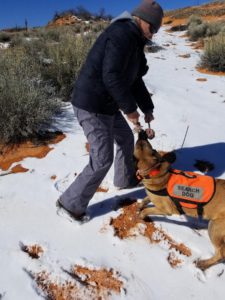
No matter which discipline you and your dog are pursuing, you start with short, very easy problems and build up to longer, more complicated ones. This is why you really need the help of experienced handlers–at first you aren’t even sure what makes a problem easy or more difficult.
What Else Do My Dog And I Need To Learn?
You and your dog will become a solid and reliable search team. You will need to pass a series of tests to show that you can work as a team in situations you may come across while searching. There will also be obedience and agility tests which show that you and your dog communicate and work together.
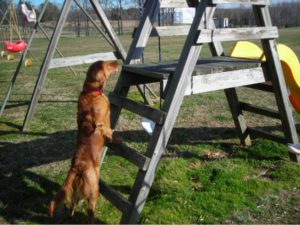
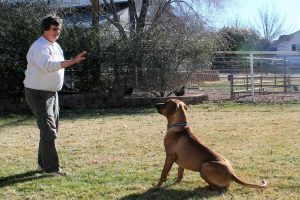
In addition, you as a handler will study scent movement, navigation with map and compass and GPS, lost person behavior, wilderness survival, emergency first aid (both human and K9), crime scene preservation, FEMA’s National Incident Management System.
Sound overwhelming? It isn’t

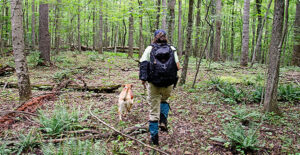
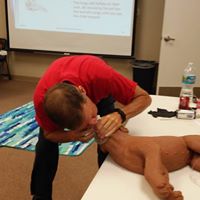

Yes, it is a lot! But you will be learning it over a period of more than a year, and much of it will be while working and having fun with your dog. It is a great challenge, but faced with others in your SAR group all working together. You and your dog will form a bond and communication beyond what you thought you could. Searching for someone who is lost and needs your help to be found is extremely worthwhile. Even the majority of searches in which you don’t have a “find” (the subject needs to be in the area you have been assigned for you to find him), you have the satisfaction that you and your dog put your skills to good use and did your best. And how wonderful is it if your dog finds the lost child so he can return home safe and sound?
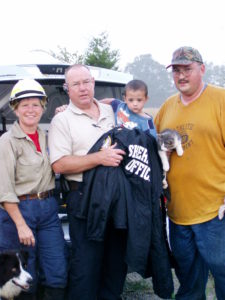
SAR Related Sites And Products
This page will give you information and suggestions on related websites, books, and equipment. I will add to it and revise it often–so check back frequently to check out changes. If you have things you think others might like to know about or find useful, please let me know! Leave a comment on this post, the Related Sites post, or email me directly at Keith@goodtimesdogtraining.com.
Questions? Feel Free To Contact Me!
If you have questions or want to know where to look for more information or a team in your area you can ask here. Or you can contact me directly at Keith@goodtimesdogtraining.com. I’d love to hear from you!
When is it time to retire your dog for SAR work?
When to retire your dog from search and rescue depends on many factors. If your dog is no longer eager to do the work, it is certainly time to retire him.
But many dogs are eager to do the work “the best game ever”, but may physically slow down with age.
Experienced dogs can get by with less training work, but they still need to be able to do enough to keep their skills sharp, and maintain an adequate level of fitness.
I think you need to ask yourself if your dog will still be effective. If he is no longer able or willing to actively search, it may be time to retire him.
You also need to ask yourself if it’s fair to the dog. My older dog stays fit hiking, as he doesn’t run as hard as when he’s searching. But when I take him on a search I state up front that he will only work for about 3 hrs. If there is a task we can do, great. He would happily search all day and into the night, but that amount of work would leave him very sore for several days.
Each dog and each case is different, but I think the 2 most important considerations are: 1. Is the dog still searching effectively, and 2. What is in the dog’s best interest.
I have a jack Russel and I can’t see him being able to do much SAR work to be honest, have you seen many of this breed doing this work?
I think a Jack Russel would make an awesome SAR dog. It is always the individual more than the breed, but the JRT’s energy and determination would make many of them great search dogs. For disaster scenarios, their smaller size would be an advantage, as they would be less likely to dislodge rubble. Anyone who knows Jack Russels knows that they may be small, but they have the energy to do it.
That doesn’t answer your question. I have seen some Jack Russels, or JRT mixes who do well with SAR. I haven’t seen a lot of them. I bet when German Shepard and Lab owners have to lift their dog over a barrier they wish they had a smaller dog!
Is ther a charge for the training sessions.
Each K9 Search and Rescue team has it’s own requirements. Most are volunteer, so members are not paid, but also not charged for training sessions. Most teams require members to pay for any equipment they need. The best thing to do is contact the K9 SAR team in your area, and ask them about any fees or costs.
If you need help finding a team in your area, let me know and I can probably help.